Dimmers for LED strip
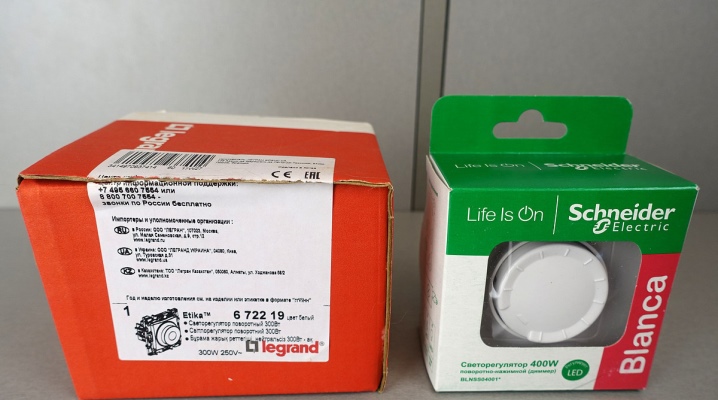
In order to be able to control the intensity of the glow of the led strip, a dimmer is built into the wiring diagram in parallel with the power supply, it is also known as a dimmer or led controller. There are many different types of these gadgets in stores these days, which are difficult for the average buyer to navigate. To choose the right dimmer, you need to know in advance about the design features, varieties and basic requirements for the functionality of the devices.
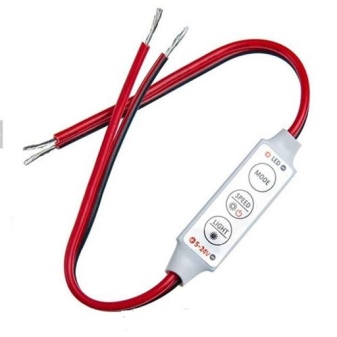
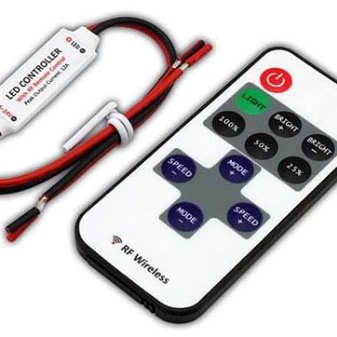
What it is?
When choosing an LED strip for an apartment and a house, most consumers do not even think about the need to dim the luminous flux. This is not surprising - if LEDs are used to illuminate the work surface in the kitchen, shelves, cabinets or niches, then the desired effect can be achieved only in the mode of maximum possible light output. The situation is quite different if LEDs are used as the main lighting and are installed around the perimeter of the ceiling space. In this case, the use of a dimmer allows you to vary the intensity of the glow. Suppose you set a light twilight in the living room in the evening, and set the minimum brightness for sleep in the children's room - this is the practical application of dimming.
From a structural point of view, the dimmer belongs to electrical appliances. The device allows the user to set and control the brightness level of the glow at his discretion. Most often, a dimmer is used to adjust the luminous flux of single-color LED strips, while they are mounted directly into the circuit itself.
Another benefit of the fixture is that it reduces the overall power consumption of the LED backlight. Moreover, a significant effect can be achieved in premises of a wide variety of functionalities - residential, office, retail and others.

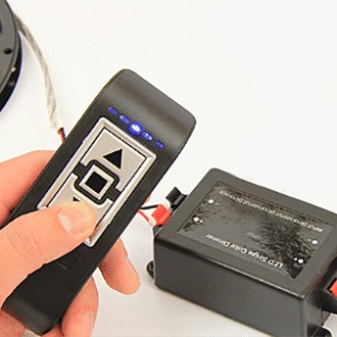
As practice shows, in each case, electricity consumption is reduced by 30-40%.
In addition, dimmers increase the operating period of the diode strips. By reducing the load, the risk of overheating of the lighting fixtures is minimized. Gentle operation significantly increases the service life of the equipment.
The use of dimmers provides comfortable control of lighting devices, since many models are equipped with remote controls. Some devices have audible alarms. The device allows you to create the most unusual color effects and even festive illumination.
Besides, the dimmed tape can be connected to the sensors of the security system. If they are triggered, the LEDs instantly turn on and thereby scare off intruders who entered the house illegally. Dimmers, along with lighting fixtures, are often installed to simulate the presence of owners in homes - this will confuse criminals.
Dimmers also have their drawbacks. In particular, the devices generate waves that cause electromagnetic interference. This can adversely affect the operation of nearby radio equipment.If the load is significantly reduced, such devices can quickly break down.

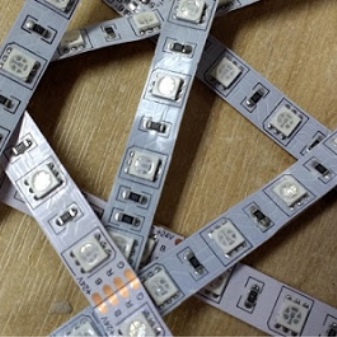
Views
Nowadays, manufacturers offer a dimmer for led strips of a wide variety of configurations and diameters. They can be grouped on several grounds at once.
Installation technique
Modular - are made in the form of a block with terminals for connection to electrical wiring.
Embedded / overhead - are mounted on the wall and visually resemble the most common switch.
Miniature - made in the form of a module with wires. The dimensions of such a dimmer are no more than a matchbox, each model has from 1 to 3 buttons.
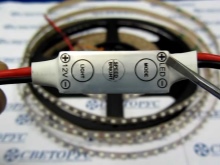
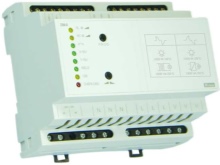

By functionality
Single channel - used for single color led strips.
Multichannel - optimal for RGB and RGBW stripes.
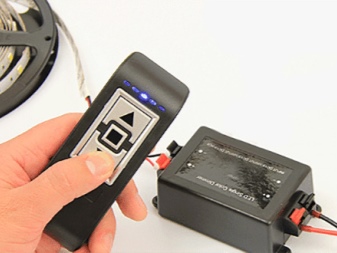

By a set of options
Exceptionally dimmable.
Regulators, which, in addition to dimming, solve a number of additional tasks. These can be functions such as a light and music device, control of several areas of lighting at once, blinking mode and others.
And also dimmers can be divided into digital and analog.
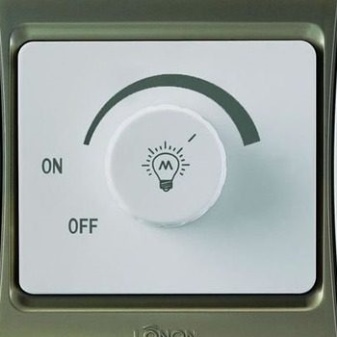
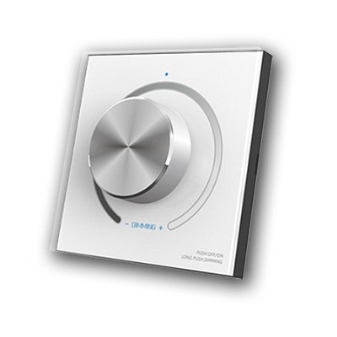
Digital
To adjust LED strips using digital dimmers, a pulse-width modulation mechanism is in demand. It is a sequence of specific command signals of varying duration. This entails changing the brightness parameters.
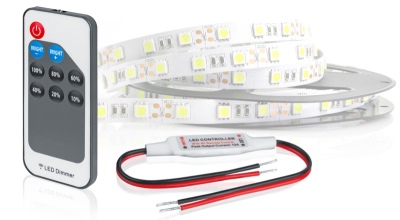
Analog
They allow changing the modes by increasing or decreasing the voltage value. Such devices make it possible to provide LED strips with a stable supply of electric current, while the power losses will be relatively small. This is the most common dimmer model. They have only one drawback - unlike digital strips, they strongly heat up the led strip, so their operational resource is largely limited.
Each of these devices has its own pros and cons, so modern manufacturers have launched the production of combined analog-digital models. They are much more effective and have fewer drawbacks than devices attributed to separate categories.
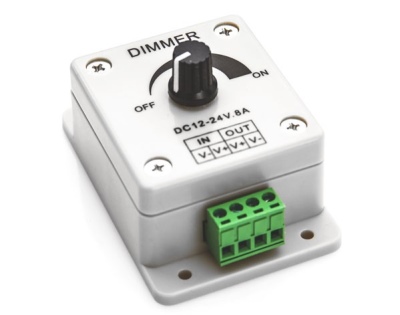
At the same time, the price for them is much higher, therefore, such products cannot be called in demand and popular among users.
How to choose?
The choice of dimmer must be carried out taking into account various factors.
Supply voltage and power
The functional voltage of any dimmer must correspond to the same parameter of the LED strip, that is, 12 or 24 V. As for the power indicator, it must exceed the power of the LEDs by 20-25%. When several sections are mounted, then their power characteristics must be added. If the dimmer works at the limit of its capabilities, then it will not last long. The required safety margin is 20-25%.
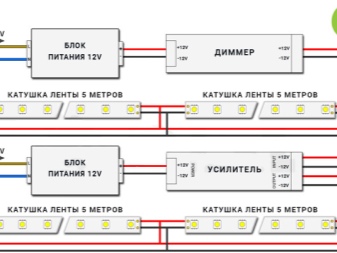
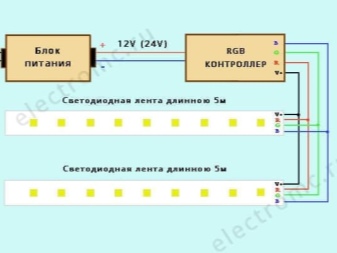
Number of channels
This parameter directly depends on the type of LED strip that you plan to use. For example, for monochrome LEDs, a standard regulator is sufficient. A multi-channel dimmer is required for RGB or RGB + W stripes. It is important to keep in mind that not all the effects available during the operation of the first type of tapes can be realized using the second, and vice versa.
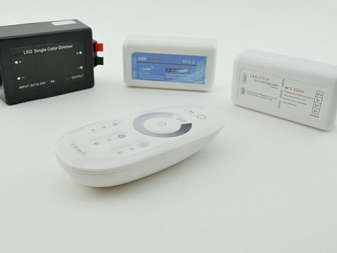
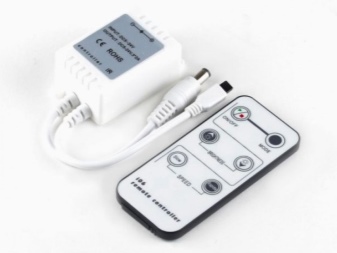
Design
LED-controllers can be surface-mounted, built-in, and also designed for secret installation. The choice directly depends on the comfort of use and design intent.
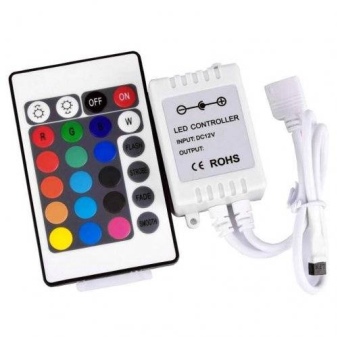
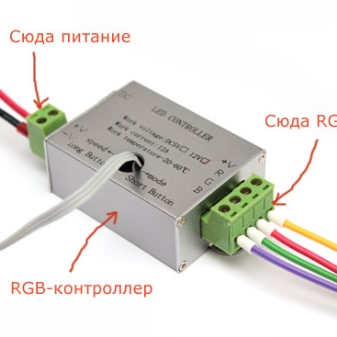
Control type
This can be a rotary knob, as well as a sensor, buttons or via the remote control. You need to choose the best model based on your own preferences and budget constraints. Keep in mind that dimmers with sensors and remote controls are much more expensive than mechanical ones.
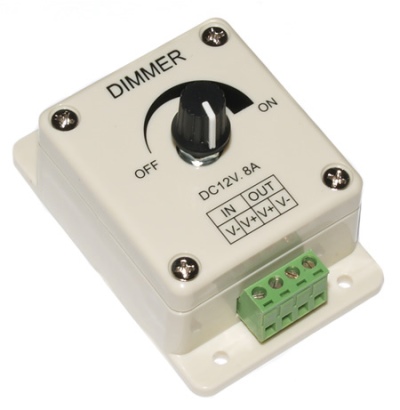
Functional
Any additional option significantly increases the price of the product. Therefore, you need to decide in advance what functionality you need. For example, if you do not plan to equip a “smart home” system and control the chandelier from a tablet, then buying a device with similar interfaces will be a waste.
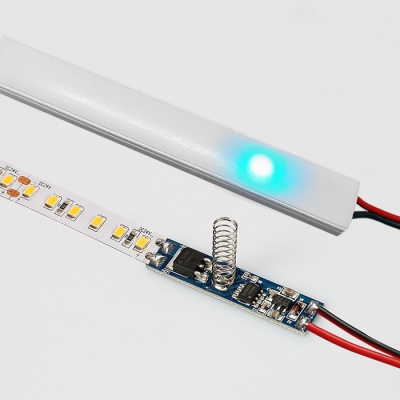
Manufacturer
On the modern market, there are many manufacturers who have established the production of equipment for dimming led strips. The most reliable companies are Legrand, Schneider, and Makel.
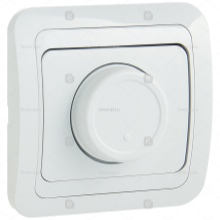
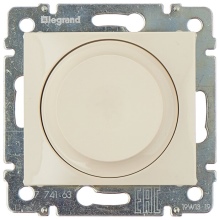
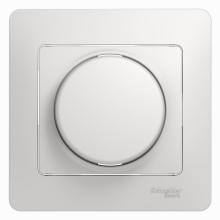
How to connect?
The circuit for connecting a 220 volt light dimmer to a led strip is developed taking into account the type of LED strip and its size. In the most primitive version, monochrome stripes are connected in series in an open circuit between the power module and the load. In this case, the total power of all connected sections of the strip should not exceed the power characteristics of the dimmer itself and the power system.

If the power of the led controller is not enough to fully control the intensity of the luminescence of the elongated LED segments, this problem can be solved by introducing a reliable amplifier into the circuit. Using special calculations, one of the sections can be connected directly to the dimmer, or you can turn it on through a couple of amplifiers.
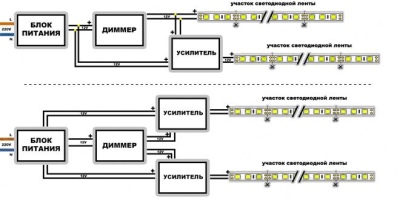
In order to simultaneously adjust the backlight intensity of 4 monochrome LED strips (both uniform in the spectrum of luminescence, and different), you should use the mechanism shown in the plan below. In this version, one section is powered directly from the dimmer, the other three - from the RGB amplifier, while the control inputs of the latter must be closed to each other.

To adjust the intensity of the luminescence and the tint gamut of RGB and RGBW bands, a conventional dimmer is clearly not enough. Instead, it is better to install a controller of the appropriate type in a single circuit.

How to manage?
In order for each person to choose for himself the most convenient and comfortable method of controlling the dimmer, modern manufacturers offer a wide range of models.
Push-button Are push-button dimmers that resemble a typical switch. The LED system is controlled by holding or pressing the button once. When pressed, the activation or deactivation of the tape starts, when held down, the brightness of its glow is adjusted.
Swivel - includes only one controlled element, manufactured as a regulator. Any manipulations with illumination are controlled by turning the knob to the right or left.
Rotary pushbutton - combine the advantages of the above-described varieties. Such models are recognized as one of the most convenient. In such a case, the devices are turned on after pressing the dimmer, the light intensity is adjusted by turning.
On the led controllers of certain types of dimmers, a scale is provided, it allows you to navigate in which direction you need to turn the element. These dimmers are installed in a flush-mounted box behind an existing switch in the room.
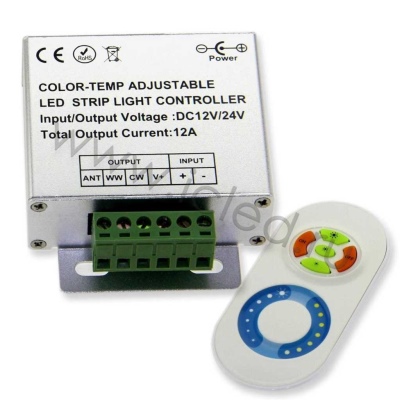
All presented options belong to the group of mechanical devices. They are the simplest and most affordable, no obvious flaws were found in them.
More expensive contactless models are offered in the elite segment.
Remote - control of such dimmers is carried out by means of a remote control of compact dimensions, most often it is included in the kit. Remote control is performed by radio signal, infrared beam or command signal. In the latter case, adjustment is possible only when the remote control is pointed at the built-in sensor, therefore it is limited to the boundaries of one room. In the second case, you can control the backlight from the next room. Such products are often time programmable. Dimmers controlled by radio signal can be operated over considerable distances, while they have a much higher price.
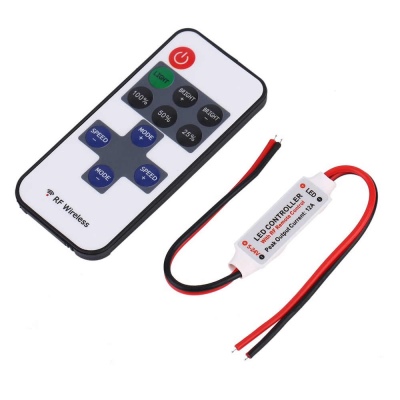
Some products provide the ability to connect to a smartphone or personal computer, they are controlled via a wireless wi-fi network.
Sensory - in this case, the dimmer is controlled by touching the control panel. In fact, it represents the usual manual controls, but looks more modern.
Acoustic - adjustment is carried out through a sound sensor built into the system. It responds to any noises and sounds exceeding the level set by the user. A similar device can be launched with a loud voice, as well as a clap.
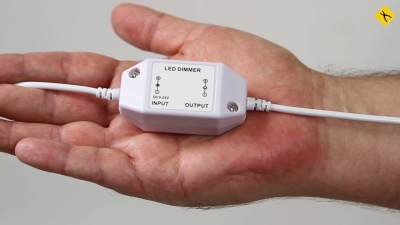
On the one hand, it is quite convenient. But if small children live in the apartment, holidays are constantly held, or you just love to watch TV, then the system will start to work incorrectly - with any loud sound, it will be activated, regardless of whether you wish it or not.
Frequent mistakes
If the dimmable LED backlight functions intermittently, beeps or blinks, most likely errors were made during the installation.
-
Loose spring for tactile control. Or an overly thick lid on top of it.
-
Lack of reliable insulation on electrical wires and switch contacts located inside the metal profile.
-
Connecting an overly powerful LED strip of considerable length. Such products are designed to operate at 20-30 watts.
-
Installation of a switch, in which all parts are located on both sides of the board, into an aluminum profile. Such devices were originally designed for installation in the luminaire body.
-
Lack of a sufficient hole in the profile cover for the infrared "eye" of the light sensor.
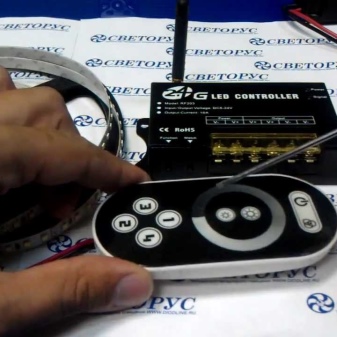
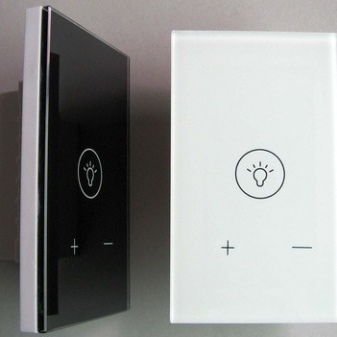
All about dimmers for LED strip in the video below.













The comment was sent successfully.